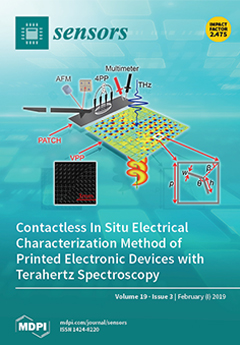Objectives: It has been reported recently that gamma measures of the electroencephalogram (EEG) might provide information about the candidate biomarker of mental diseases like schizophrenia, Alzheimer’s disease, affective disorder and so on, but as we know it is a difficult issue to
[...] Read more.
Objectives: It has been reported recently that gamma measures of the electroencephalogram (EEG) might provide information about the candidate biomarker of mental diseases like schizophrenia, Alzheimer’s disease, affective disorder and so on, but as we know it is a difficult issue to induce visual and tactile evoked responses at high frequencies. Although a high-frequency response evoked by auditory senses is achievable, the quality of the recording response is not ideal, such as relatively low signal-to-noise ratio (SNR). Recently, auditory steady-state responses (ASSRs) play an essential role in the field of basic auditory studies and clinical uses. However, how to improve the quality of ASSRs is still a challenge which researchers have been working on. This study aims at designing a more comfortable and suitable evoked paradigm and then enhancing the quality of the ASSRs in healthy subjects so as to further apply it in clinical practice.
Methods: Chirp and click stimuli with 40 Hz and 60 Hz were employed to evoke the gamma-ASSR respectively, and the sound adjusted to 45 dB sound pressure level (SPL). Twenty healthy subjects with normal-hearing participated, and 64-channel EEGs were simultaneously recorded during the experiment. Event-related spectral perturbation (ERSP) and SNR of the ASSRs were measured and analyzed to verify the feasibility and adaptability of the proposed evoked paradigm.
Results: The results showed that the evoked paradigm proposed in this study could enhance ASSRs with strong feasibility and adaptability. (1) ASSR waves in time domain indicated that 40 Hz stimuli could significantly induce larger peak-to-peak values of ASSRs compared to 60 Hz stimuli (
p < 0.01**); ERSP showed that obvious ASSRs were obtained at each lead for both 40 Hz and 60 Hz, as well as the click and chirp stimuli. (2) The SNR of the ASSRs were –3.23 ± 1.68, –2.44 ± 2.90, –4.66 ± 2.09, and –3.53 ± 3.49 respectively for 40 Hz click, 40 Hz chirp, 60 Hz click and 60 Hz chirp, indicating the chirp stimuli could induce significantly better ASSR than the click, and 40 Hz ASSRs had the higher SNR than 60 Hz (
p < 0.01**).
Limitation: In this study, sample size was small and the age span was not large enough.
Conclusions: This study verified the feasibility and adaptability of the proposed evoked paradigm to improve the quality of the gamma-ASSR, which is significant in clinical application. The results suggested that 40 Hz ASSR evoked by chirp stimuli had the best performance and was expected to be used in clinical practice, especially in the field of mental diseases such as schizophrenia, Alzheimer’s disease, and affective disorder.
Full article






